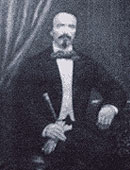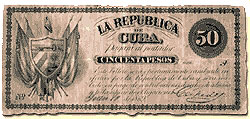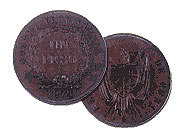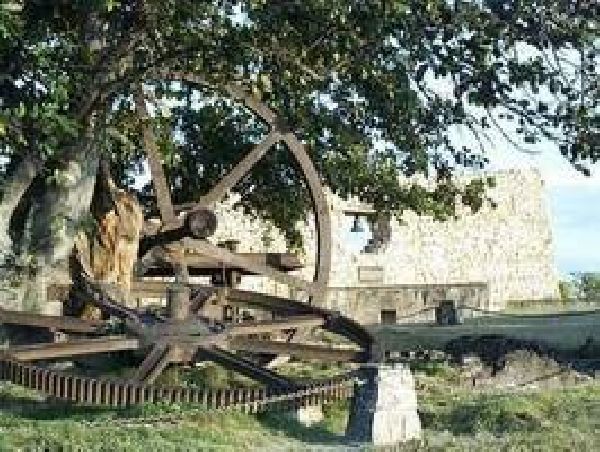In late May and early June 1869, was held in New York the first Cuban issuance of paper money, which began arriving after this date in regular remittances to the island
During days 10 and 11 April 1869, is held in Camagüey Guáimaro Assembly, which proclaimed the Republic form of government and as president of her to Carlos Manuel de Cespedes. The legislative power resided in the House of Representatives. So the new government was structured.
On April 21, 1869 the House agreed to endorse all the powers that the President had given to Morales Lemus, pointing out that, without delay, it took two million pesos in paper money.
The issuance of notes payable to the Republic of Cuba transcends the need for a proper circulation of Cuba, it represents a measure of legitimacy and nationality.
On July 22, 1869 in the Cubano Libre, which was the official organ of the Republic in Arms, was published on governmental part of the Law of July 9, 1869, passed by the House of Representatives and sanctioned by Cespedes, on the compulsory circulation of these notes in the liberated territories.
The Act specified that the values of the issuance of such notes correspond to the denominations of 1, 5, 10 and 50 pesos. However, in the end, the issue included tickets worth 50 cents and 100 pesos, reaching a total of 1 700 000 pesos at a cost of 5 328 pesos and 23 cents.
To complete the required two million pesos were printed notes of 500 and 1 000 pesos, which were recorded by the Revolutionary Junta Central de Cuba and Puerto Rico, overseas representative government that ruled in the fields of free Cuba.
The distribution of these tickets are sometimes limited by the difficulties the government insurgent was rooted in a particular city and the need to start guerrilla warfare as an effective means to cope with the well-armed Spanish army.
However, it was necessary for Lawns require mandatory use, because some skeptical citizens expressed their lack of confidence in them.
Céspedes, as president, was responsible for the issuance and delivery of the money supply, having to justify to the House monthly expenses which would invest the money of the Republic. Proliferated to the extent that war, President recababa higher levels of responsibility and limited efforts that, increasingly, to assume all the requirements imposed by circulation of paper money on a permanent basis.
To this was added circulating depletion, by the difficulties encountered with referrals of money from abroad.
Both reasons were, in my opinion, which determined that the issuance of these notes was only during this period of insurrection.
In the following year, ie in 1870, were minted in silver and copper coins in the denominations that would be the fractional metal ticketing 1869. This draft issue only came to coin, in very limited quantities, patterns or evidence, by what is known today as “the patterns of 1870.”
Copper are registered denominations of 5, 10, 20 and 50 cents and a dollar. In coined silver pieces 5 and 10 cents, and a weight. The names of 20 silver and 50 cents does not have any information of its existence.
There is also the mystery of its place of issue, which could be Potosí, Philadelphia and Providence, but more recent studies favor the Potosi mint.
Sources: Opus Habana/InternetPhotos/TheCubanHistory.com
First Cuban Paper Money/ The Cuban History/ Arnoldo Varona, Editor
LOS PRIMEROS BILLETES CUBANOS
A fines de mayo y comienzos de junio de 1869, se realizó en Nueva York la primera emisión cubana de papel moneda, la cual comenzó a llegar a partir de esa fecha en remesas periódicas a la Isla.
Durante los días 10 y 11 de abril de 1869, se celebra en Camagüey la Asamblea de Guáimaro, que proclamó como forma de gobierno la República y como presidente de ella a Carlos Manuel de Céspedes. El poder legislativo residió en la Cámara de Representantes. Así quedó estructurado el nuevo gobierno.
El 21 de abril de 1869 la Cámara de Representantes acordó ratificar todas las facultades que el Presidente había conferido a Morales Lemus, precisándole que, sin demora, eran necesarios dos millones de pesos en papel moneda.
La emisión de los billetes a nombre de la República de Cuba trasciende la necesidad de contar con un circulante propiamente cubano, pues representa un acto de legitimidad y nacionalidad.
El 22 de julio de 1869 en el Cubano Libre, que era el órgano oficial de la República en Armas, se publicó el parte gubernativo de la Ley del 9 de julio de 1869, aprobada por la Cámara de Representantes y sancionada por Céspedes, sobre la circulación obligatoria de estos billetes en los territorios liberados.
En esta ley se precisaba que los valores de los billetes de tal emisión corresponderían a las denominaciones de 1, 5, 10 y 50 pesos. Sin embargo, al final, la emisión incluyó billetes por valor de 50 centavos y 100 pesos, hasta alcanzar un valor total de 1 700 000 pesos a un costo de 5 328 pesos con 23 centavos.
Para completar los dos millones de pesos necesarios, se imprimieron billetes de 500 y 1 000 pesos, que fueron grabados por la Junta Central Revolucionaria de Cuba y Puerto Rico, representante en el exterior del gobierno que regía en los campos de Cuba libre.
La distribución de estos billetes se limitó en ocasiones por las dificultades que encontraba el gobierno insurgente de radicar en una ciudad determinada y la necesidad de comenzar la guerra de guerrillas como medio eficaz de hacerle frente al bien armado ejército español.
No obstante, fue necesario que Céspedes precisara la obligatoriedad de su uso, porque algunos ciudadanos escépticos manifestaban su falta de confianza en ellos.
Céspedes, como presidente, era el responsable de la emisión y de la entrega del circulante monetario, teniendo que justificar mensualmente ante la Cámara los gastos en los cuales se invertiría el dinero de la República. En la medida que proliferaba la guerra, recababa del Presidente mayor responsabilidad y niveles de gestiones que lo limitaban, cada vez más, a asumir todos los requerimientos que imponía la circulación de un papel moneda con carácter permanente.
A esto se sumaba el agotamiento del circulante, por las dificultades que se presentaban con las remisiones de dinero desde el exterior.
Ambas razones fueron, a mi juicio, las que determinaron que la emisión de estos billetes fuera única durante todo este período insurreccional.
En el año siguiente, o sea, en 1870, se acuñaron en plata y cobre monedas en las denominaciones que serían el fraccionario metálico de la emisión de billetes de 1869. De este proyecto de emisión sólo se llegaron a acuñar, en cantidades muy limitadas, los patrones o pruebas, por lo que se conocen hoy como «los patrones de 1870».
En cobre se registran las denominaciones de 5, 10, 20 y 50 centavos y las de un peso. En plata se acuñaron las piezas de 5 y 10 centavos, y un peso. Las denominaciones en plata de 20 y 50 centavos no se tiene información alguna de su existencia.
También existe la incógnita de su lugar de acuñación, que podría ser Potosí, Filadelfia o Providence, pero estudios más recientes se inclinan por la ceca de Potosí.
Sources: Opus Habana/InternetPhotos/TheCubanHistory.com
Los Primeros Billetes Cubanos/ The Cuban History/ Arnoldo Varona, Editor



 First Cuban Paper Money
First Cuban Paper Money


